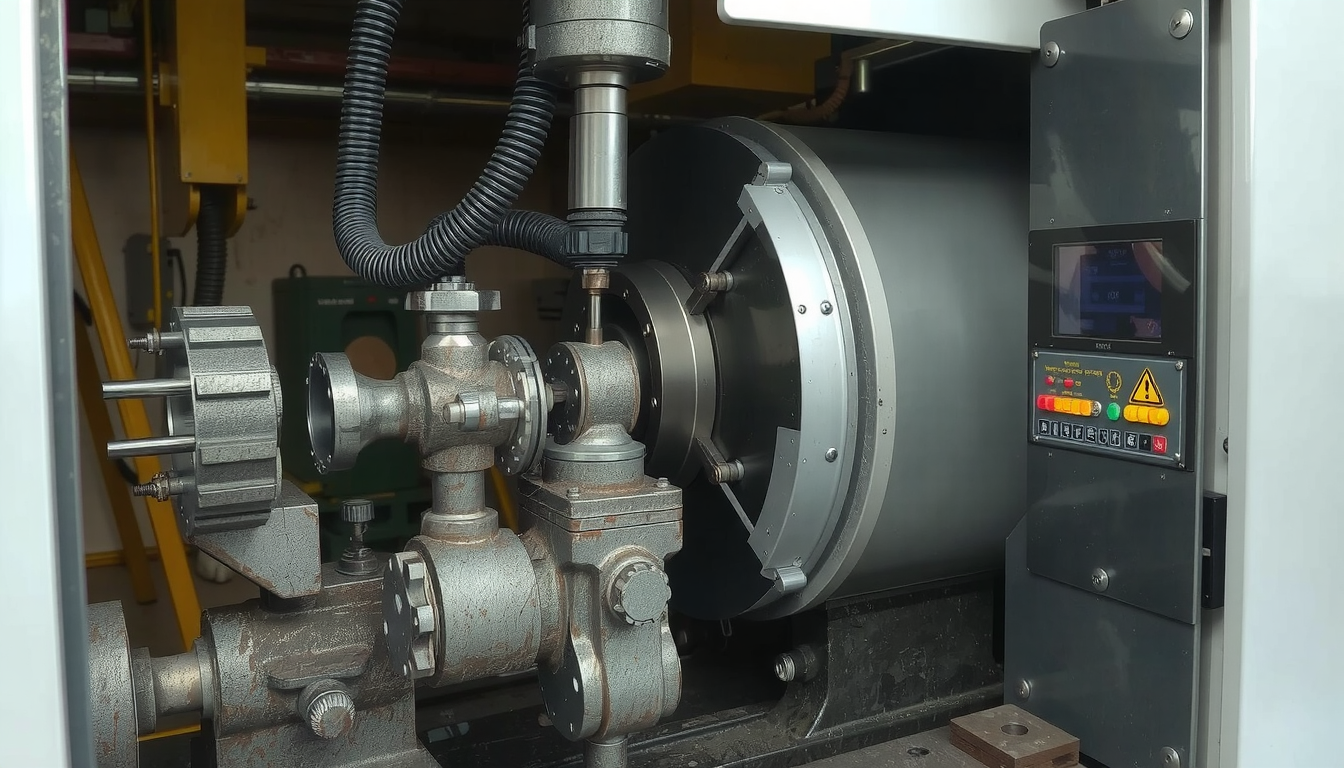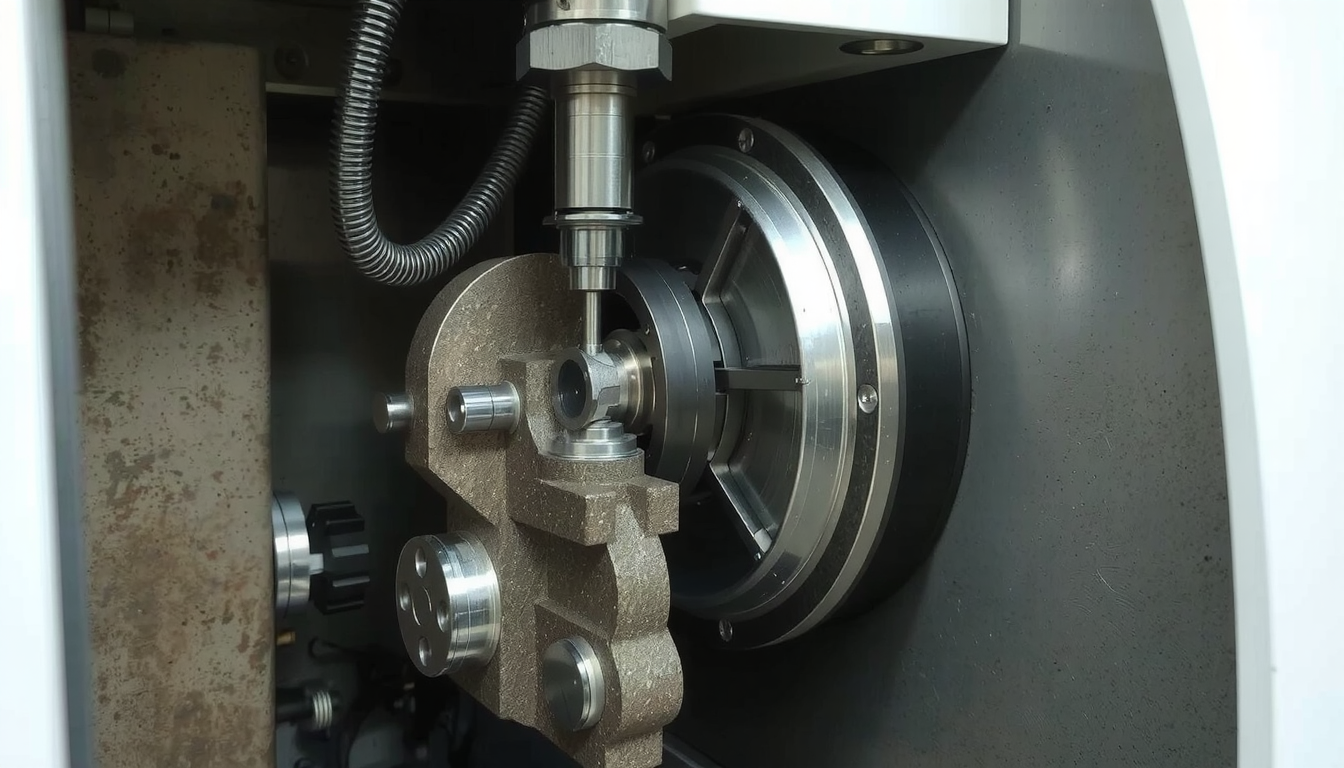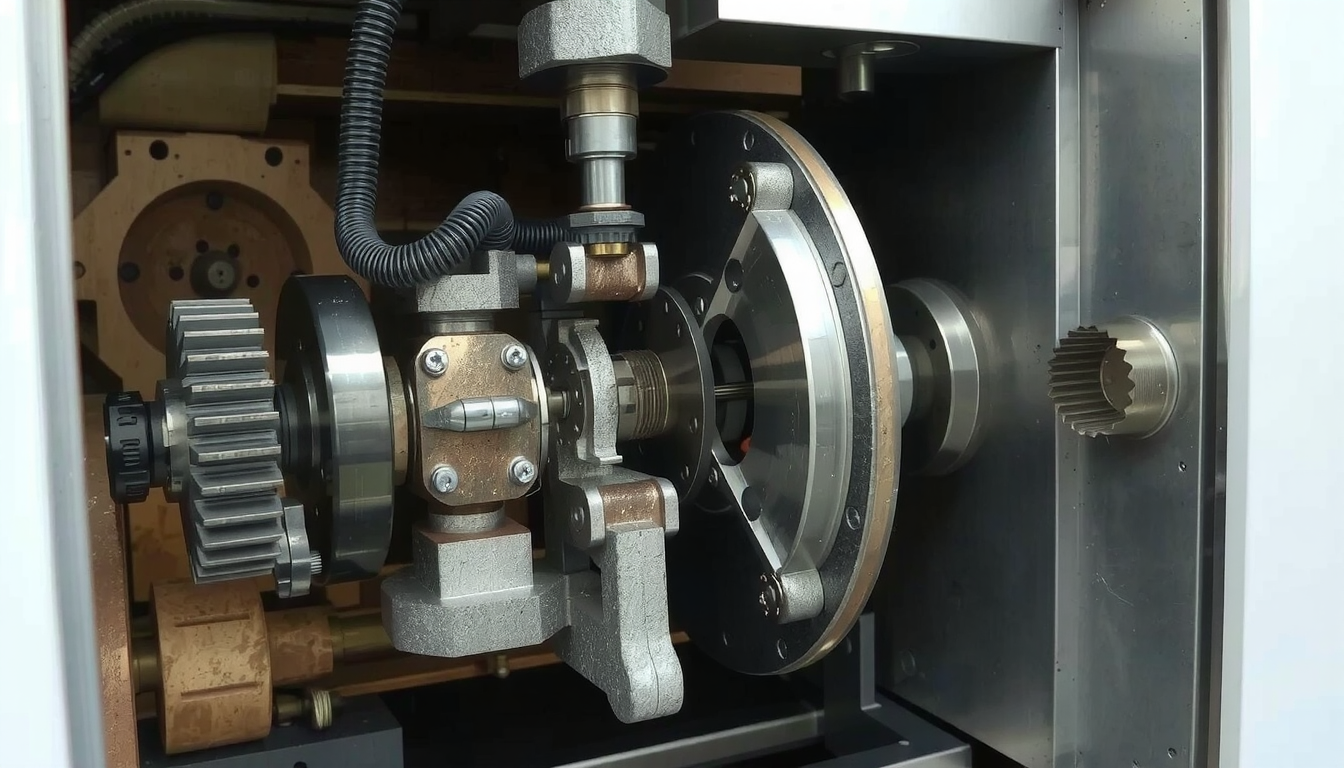H2: In Summary, CNC Lathe Overview

A CNC lathe is a fully automated machine that spins a workpiece, like a metal rod, on a spindle. The material spins at high speed. A computer-controlled cutting tool moves along two axes (X and Z). The tool is precisely directed by a digital command which is written in G-code. This method of making the part is a subtractive process. In simple words, the part was made subtractively, meaning it took away, or removed, material to create precise, often round, parts.
This guide makes it easy to understand the whole process. We will focus on the main features of the machine. We will also discuss the digital instructions it uses. We will walk through the steps of how an unprocessed piece of metal is changed into a finished product. A basic understanding of how a CNC lathe works is crucial for modern making.
H2: Analyzing the Machine
The “CNC” (Computer Numerical Control) is the brain, while the machine’s body performs the actual work. To understand how a CNC lathe works, you have to grasp its several core components first. Each part has its own essential function. Understanding these key components of a CNC lathe is the basis for the whole operation.
The machine is built for strength and precision. Its heavy frame resists the strong forces created during cutting. This ensures that every piece is done right.
| Component | Primary Function | Why It’s Critical |
|---|---|---|
| Headstock | Contains the main spindle and the motor that rotates it. | This is where the power and rotation required to spin the workpiece come from. |
| Spindle | Rotates the workpiece at precise speeds. | The speed of the spindle affects the surface finish and how fast material can be cut. |
| Chuck / Collet | Clamps onto and holds the workpiece in the spindle. | A secure grip is vital for safety and accuracy. If the part moves, the cut will be wrong. |
| Bed | The solid foundation that all other parts are mounted to. | It provides the stiffness needed to resist vibration and cutting forces, ensuring precision. |
| Carriage & Tool Turret | The carriage moves along the bed (Z-axis). The turret holds the tools and moves in and out (X-axis). | This two-axis movement allows the tool to follow the programmed path to shape the part. |
| Tailstock | A movable support at the end opposite the headstock. | It holds and prevents thin or long workpieces from bending or shaking during the cutting phase. |
| CNC Controller | The electronic “brain” that reads the program and controls all motors. | It translates the digital G-code commands into the machine’s physical movements. |
H2: The Part’s Journey: From Idea to Reality
The process of producing a part is a clear, step-by-step journey. It starts with an idea and ends with a physical object. This workflow shows exactly how a CNC lathe works, from the screen to the machine.
1. The Digital Model (CAD)
Every project begins with a design. This is usually a 2D drawing or a 3D model. It is created on Computer-Aided Design (CAD) software. Programs like SolidWorks or AutoCAD are used for producing the part with precise dimensions. This digital design is the final blueprint for the physical object.
2. The Manufacturing Plan (CAM)
Next, the CAD model is loaded into Computer-Aided Manufacturing (CAM) software. This is the point where a programmer or machinist plans how to make the part. They decide which tools to use, the order of operations, and the cutting paths. The CAM software helps define how fast the spindle should spin and how quickly the tool should move. This stage is crucial for an efficient and accurate process.

3. Writing the Instructions (G-Code)
Once the plan is set, the CAM software creates a text file containing a special set of instructions called G-code. G-code is the language the CNC lathe understands. It tells the machine exactly where to move, how fast to go, and when to turn on the spindle or coolant.
4. The Machinist’s Setup
This is where the manual work begins. A machinist gears up the CNC lathe for the intended operation. This involves a few key steps that require skill and attention.
First, the G-code program is loaded into the CNC controller. After that, the raw material is tightly mounted in the chuck. This might be a solid rod of aluminum 6061. The machinist then loads the correct cutting tools into the tool turret.
A critical action is setting tool offsets. The machinist carefully touches each tool to the workpiece, which tells the machine the exact location of the cutting edge of each tool. The machine needs to know this information, or else it will cut incorrectly. Additionally, many machinists perform a “dry run.” They run the program in the air, a few inches away from the part. This lets them watch the tool movements and check for any code issues before cutting metal. This prevents costly crashes.
5. The Automated Machining Process
As soon as the setup is finished, the operator shuts the safety door and presses the start button. The machine takes over. The spindle accelerates to thousands of RPM. The coolant system floods the cutting area to keep the tool and part cool.
The tool turret rotates to bring the first tool into position, and this tool starts cutting. It follows the G-code path perfectly. Common operations you might see include:
- Facing: Cutting a flat, smooth surface on the end of the part.
- Turning: Moving the tool along the side of the part to reduce its diameter.
- Grooving: Plunging a tool to create a narrow channel.
- Threading: Creating screw threads on the inside or outside of the part.
- Drilling: Boring a hole in the center of the part.
6. Quality Checking and Completion
When the program finishes, the machine stops. The operator opens the door and takes out the finished part. The component is then subjected to cleaning and inspection. Using precision measuring tools like calipers or micrometers, the operator checks all dimensions to ensure they comply with the required tolerances shown on the drawing. If everything is correct, the part is complete. For large production runs, this cycle is repeated hundreds or thousands of times.

H2: What the Machine Speaks: G-Code
To have a clear grasp of how a CNC lathe really functions, one has to have a basic feel for G-code. This is the simple programming language that directs the machine. It is a series of commands that tell the motors and other components what to do.
On a standard lathe, there are two primary axes of movement:
- Z-axis: Moves the tool along the length of the workpiece, parallel to the spindle.
- X-axis: Moves the tool toward or away from the center of the workpiece, controlling its diameter.
G-code commands are combined with other letter codes to form a complete instruction. These codes control the working principles of a CNC lathe machine from start to finish. Here are a few of the most common codes.
| Code | Meaning | What It Does |
|---|---|---|
| Rapid Move | Moves the tool quickly to a new position without cutting. | |
| Linear Feed Move | Moves the tool in a straight line at a set feed rate for cutting. | |
| Arc Move | Moves the tool in a circular path (clockwise or counter-clockwise). | |
| Spindle Speed | Sets the spindle speed in RPM (e.g., means 2000 RPM). | |
| Feed Rate | Sets the speed of the tool’s movement (e.g., inches per minute). | |
| Spindle On | Turns the spindle on in a clockwise direction. | |
| Coolant On | Turns on the coolant system. |
A line of code like tells the lathe to make a straight-line cut. It cuts to a diameter of 2.0 inches and a length of -3.5 inches. It does this at a feed rate of 10 inches per minute.
H2: CNC vs. Manual Lathe: Key Differences
The CNC lathe is the modern version of the traditional manual lathe. Both shape parts by spinning them against a cutting tool, but their operation is very different. Understanding these differences highlights why CNC technology is so important. Unlike manual lathes, CNC lathes allow for precise, consistent, and efficient production.
| Feature | CNC Lathe | Manual Lathe |
|---|---|---|
| Control | Controlled by a computer program (G-code). | Controlled by an operator turning handwheels and levers. |
| Precision | Extremely high and consistent. Tolerances can be as tight as ±0.005mm (0.0002 inches). | Depends entirely on the operator’s skill and focus. Varies from part to part. |
| Complexity | Can easily produce complex curves, tapers, and shapes with high accuracy. | Making complex shapes is very difficult, slow, and requires a master machinist. |
| Speed | Ideal for mass production. Once set up, it can run continuously with little oversight. | Best for one-off custom parts, simple repairs, or hobby work. |
H2: Industries and Applications
The speed and precision of CNC lathes have made them a necessity in many industries. They can process a wide range of materials, from soft plastics like Delrin to hard metals like aluminum, steel, and even titanium.

This versatility is why CNC turning is used everywhere. Key industries include:
- Aerospace: For engine parts, landing gear components, and high-strength fittings.
- Automotive: For making shafts, valves, pistons, and transmission parts.
- Medical: For creating custom surgical implants, tools, and device components.
- Electronics: For connectors, sockets, and custom metal housings.
The process is great for both rapid prototyping and full-scale production. Whether you need a single prototype or thousands of identical parts, professional CNC lathe services can turn your digital designs into reality. Expert shops like Mekalite use this technology to serve a vast array of industrial needs, which shows just how vital this process is.
H2: Frequently Asked Questions
H3: What is the main difference between a CNC lathe and a CNC mill?
A CNC lathe spins the workpiece, and a mostly stationary tool cuts it to create round or cylindrical parts. Think of it like a potter’s wheel for metal. A CNC mill, on the other hand, spins the cutting tool and moves it across a stationary workpiece to create more complex, often square or blocky, shapes. A lathe makes a baseball bat, while a mill makes an engine block.
H3: What materials can a CNC lathe work with?
CNC lathes can machine a wide variety of materials. This includes most metals, such as aluminum, steel, stainless steel, brass, copper, and titanium. They can also work with many plastics, such as ABS, polycarbonate, nylon, and Delrin. Some woods can even be turned. The right material choice should be based on the machine’s power and the cutting tools used.
H3: How long does it take to machine a part?
The time it takes to make a part on a CNC lathe can vary greatly. A very simple part, like a plain bushing, might take less than a minute. A highly complex part with many features could take an hour or more. The material’s hardness and the part’s complexity are the main factors that affect the time. The required surface finish and the number of different tools needed are also important considerations.
H3: Is it hard to learn how a CNC lathe works?
Learning the basics of how to operate a CNC lathe can be done fairly quickly. However, becoming a skilled CNC machinist takes a good amount of time and practice. It requires a deep understanding of materials, cutting tools, and G-code programming, as well as problem-solving skills. It is a career that blends technical knowledge with valuable hands-on experience.
H3: What does “turning” mean in this context?
In machining, “turning” is the main process done on a lathe. It specifically refers to the action of removing material from the outside diameter of a spinning workpiece. This is done to reduce its size, create a specific shape, or produce a smooth surface finish. It is the fundamental operation that defines how does a cnc lathe work.

